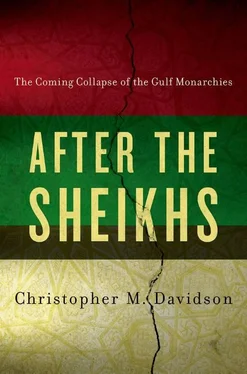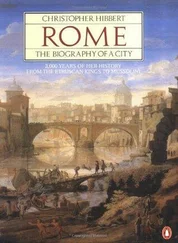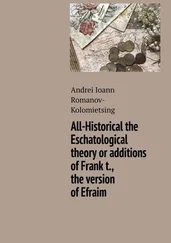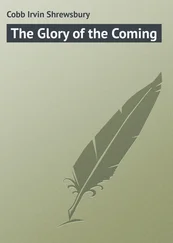Many East African countries have benefited from Gulf ODA: originally those with substantial Arab or Muslim populations, but more recently some others have begun to receive assistance. The UAE has been dispensing aid to Somalia since the early 1990s, and in 2008 began supplying medicines and foodstuffs to the Sudan. [326] 18. Ibid.
Saudi Arabia has followed a similar path, having allocated $10 million in aid to the Horn of Africa countries through the World Food Programme and with ruling family member Al-Waleed bin Talal Al-Saud having personally provided a further $1 million of aid, specifically to help Kenya. The latter gift prompted the World Food Programme’s Executive Director to claim ‘… it is exactly the kind of support that these desperate people deserve from both private donors and governments’. [327] 19. World Food Programme , press release, 2 May 2006.
Qatar is also getting involved, having recently paid for the reconstruction of the Asmara International Stadium in Eritrea and the building of a new ‘Qatari-Eritrean Hall of Friendship’ as part of the complex. [328] 20. The Peninsula , 3 June 2011.
Although these sums and assistance packages are far smaller than those currently being channelled to the Arab states, it is likely that more Gulf ODA will be sent to East Africa as security in the region deteriorates and it remains open to pirates and terror groups that may target Gulf interests.
For many years South Asian states — primarily India and Pakistan — have received generous aid from the Gulf monarchies, not least due to their shared economic histories and labour migration flows. But over the last decade the value of aid has dramatically increased, mainly as a response to the perceived threat of al-Qaeda and other Afghanistan and Pakistan-based organisations to the region’s security. After the 2005 earthquake in Kashmir, Saudi Arabia immediately donated $3 million to Pakistan and promised a further $570 million in follow-up assistance — the largest package provided by any donor state. A new organisation was set up — the Saudi Public Assistance for Pakistan Earthquake Victims — which set about constructing over 4,000 new houses at a cost of $17 million for some of the homeless Pakistanis. [329] 21. New York Times , 20 November 2005.
More recently, following the 2010 floods in Pakistan, Saudi Arabia has again been the primary donor to Pakistan’s relief efforts, supplying more than $360 million in aid and helping to build two new hospitals. [330] 22. Arab News , 30 August 2010.
Over the same period it is believed that Saudi Arabia provided Afghanistan with over $200 million in aid. Both Kuwait and the UAE pledged $100 million to Pakistan after the 2005 earthquake, [331] 23. BBC News, 12 October 2005.
and their collective aid efforts to Afghanistan also amount to several hundred million dollars. Since 9/11 the UAE Red Crescent Society has supplied over $40 million, with a further $30 million having been supplied by other Abu Dhabi-based groups. [332] 24. The National , 5 August 2008.
This has been used to construct a large hospital, six clinics, a public library, eleven schools and even a 6,000 student capacity Zayed University of Afghanistan. A Zayed City is also being built to house over 2000 displaced persons, [333] 25. The National , 23 June 2008.
again named after Abu Dhabi’s late ruler.
Development aid has been channelled into other parts of Asia too, especially in countries with either a predominantly Muslim population or a labour supplying relationship with the Gulf monarchies. Although Gulf aid was slow to reach Indonesia and elsewhere in East Asia following the 2004 tsunami, with Saudi Arabia’s response being described as ‘shameful’ by Al-Jazeera and with Kuwait’s Al-Qabas newspaper urging its government ‘to give them more as we are rich’, [334] 26. BBC News, 7 January 2005.
the same mistake is unlikely to be made again. Qatar, for example, now has a new state-sponsored charity — Reach Out to Asia — specifically to provide aid and educational outreach to poorer parts of South East Asia. Chaired by one of the emir’s daughters, its significance has been described as ‘not being lost on Qatar’s large population of South East Asian migrant workers’. [335] 27. Kamrava, Mehran, ‘Royal Factionalism and Political Liberalization in Qatar’ in Middle East Journal , Vol. 63, No. 3, 2009, pp. 407–408.
The UAE is being similarly proactive, with its aid programme now reaching as far as Mongolia. Commissioned by the new Mongolia-based Zayed bin Sultan Al-Nahyan Charitable and Humanitarian Foundation and supervised by a lesser member of the Abu Dhabi ruling family, a complex containing housing, schools, mosques, and healthcare facilities is being built at a cost of about $1 million. Significantly, the project has been described as being for ‘…the Mongolian Muslims living in Olgiy… situated in the extreme west of Mongolia and sharing borders with China and Russia’. [336] 28. WAM , 12 July 2011.
Surprising to many, Gulf ODA has also played a major role in Europe, or more specifically the development of Muslim communities in Eastern Europe. Most notable has been the substantial aid that has flowed into Kosovo and other parts of the Balkans since the conflicts of the late 1990s. The government-backed Saudi Joint Committee for the Relief of Kosovo spent $5 million funding housing projects and providing food and medical supplies; it also paid for the building of mosques and the setting up of ‘religious programmes’, [337] 29. Saudi Arabia Ministry for Foreign Affairs, press release, 31 October 1999.
while the Saudi Red Crescent Society despatched medical volunteers to the various refugee camps. [338] 30. BBC News, 24 April 1999.
The UAE has been equally if not more active in Kosovo, with its total aid programme now believed to have totalled some $30 million. The Muhammad bin Rashid Charitable and Humanitarian Establishment — named after the current ruler of Dubai — ploughed several million dollars into the Kosovo relief effort, and in 1999 the UAE’s terrestrial TV stations participated in a charity telethon. The event raised $15 million and then Muhammad doubled this sum, although not anonymously. The money was used to build over fifty new mosques in Kosovo in 2000. [339] 31. Wilson, Graeme, Rashid’s Legacy: The Genesis of the Maktoum Family and the History of Dubai (Dubai: Media Prima, 2006), p. 516.
Upon visiting Dubai in 2009 to take part in a university graduation ceremony, former US Secretary of State Colin Powell referred to this and other Dubai development assistance in the presence of Muhammad by stating that the ‘emirate is now on a par with New York, London, and Paris’ and ‘praising the humanitarian and charitable campaigns launched by the wise leadership to help people around the world realise the concept of wealth-sharing and achieve social equality among peoples in various communities, especially the poor’. [340] 32. The National , 14 May 2009.
Active neutrality: peacekeeping and mediation
Closely connected to the dispensing of development assistance and international charity have been the increasingly extensive peace-keeping missions despatched by some Gulf monarchies to regional hotspots — often involving the same countries in receipt of ODA. Although there are some exceptions, in most cases the Gulf deployments have not seen frontline action and have usually been in a supporting role to forces from other states. Nevertheless their activities have often led to favourable regional and international headlines. As a small state with a small indigenous population, the UAE perhaps provides the best example of this strategy. Having tried to intervene in almost every regional dispute since the 1970s, its peace-keeping missions have helped it punch well above its weight in the Arab world. In 1977 UAE soldiers [341] 33. The UAE’s federal armed forces were then called the Union Defence Force.
were deployed overseas for the first time, when a contingent was sent to join the Joint Arab Deterrent Force in the Lebanon. [342] 34. ( in Arabic ) Obaid, Nawaf E., The Foreign Policy of the United Arab Emirates (Beirut: Majd, 2004), p. 155.
And in 1992 the UAE Armed Forces made its maiden intervention outside the Middle East by sending engineers and a peace-keeping force to assist US operations in Somalia. [343] 35. Heard-Bey, Frauke, From Trucial States to United Arab Emirates (London: Longman, 1996), pp. 511–513; Davidson, Christopher M., Dubai: The Vulnerability of Success (London: Hurst, 2008), chapter 5.
During the mid-1990s more UAE troops arrived in Somalia in addition to Rwanda and Mozambique. [344] 36. Hawley, Donald, The Emirates: Witness to a Metamorphosis (Norwich: Michael Russell, 2007), p. 30.
Significantly, in 1995 the UAE was the first Arab state to intervene in a modern European conflict when it airlifted wounded Muslims out of Bosnia. And by 1999 the UAE was again proactive in the Balkans, sending a force to help protect the embattled Kosovars [345] 37. Jane’s Defense Weekly , 7 February 2007.
in tandem with its development assistance efforts to the region.
Читать дальше












